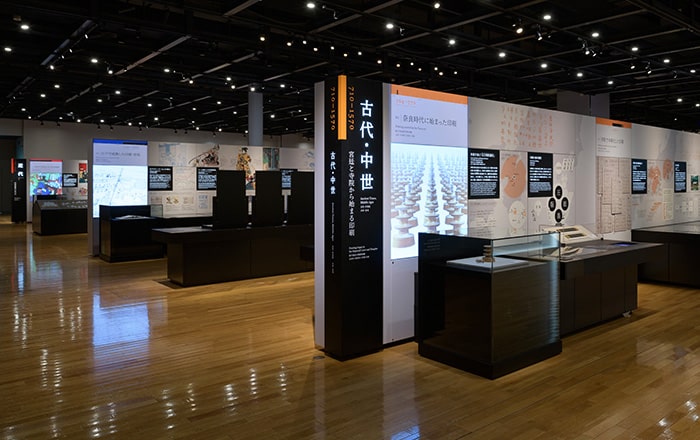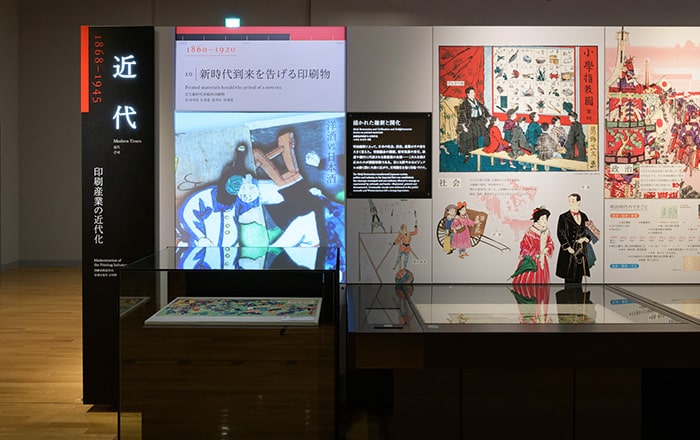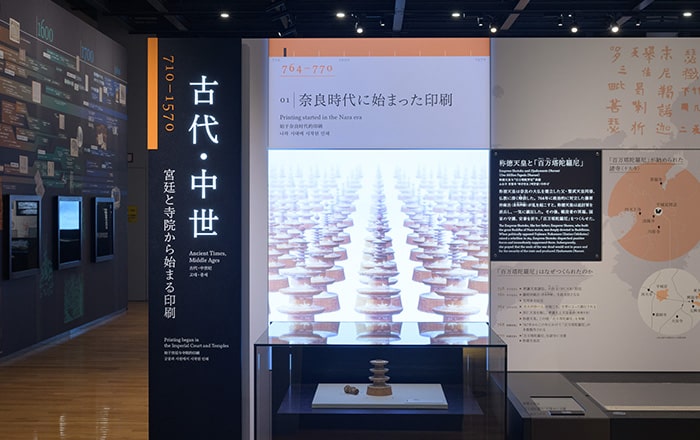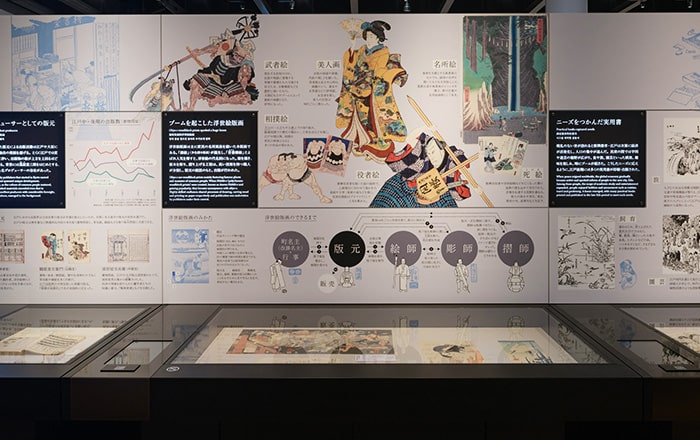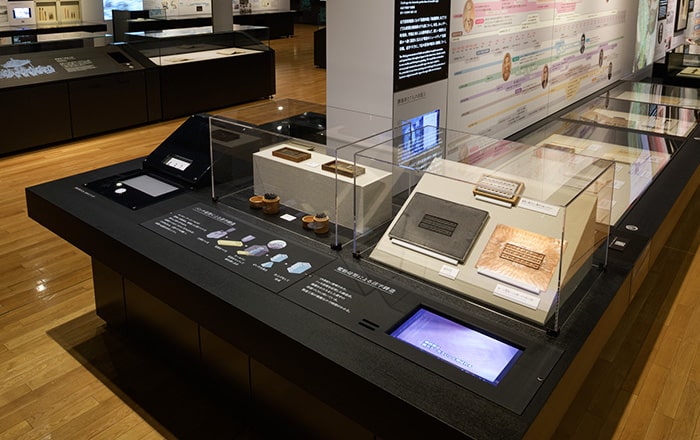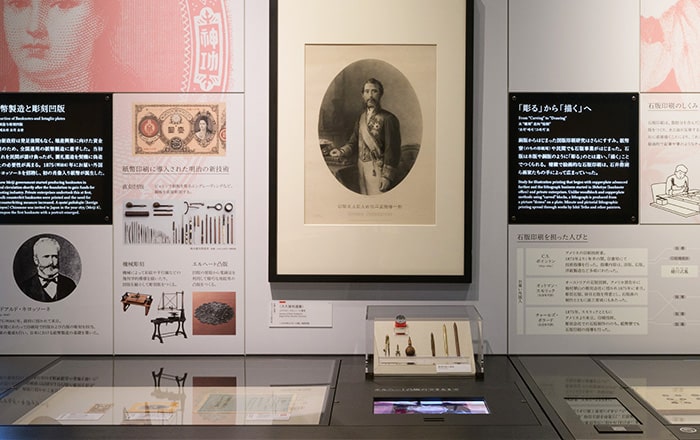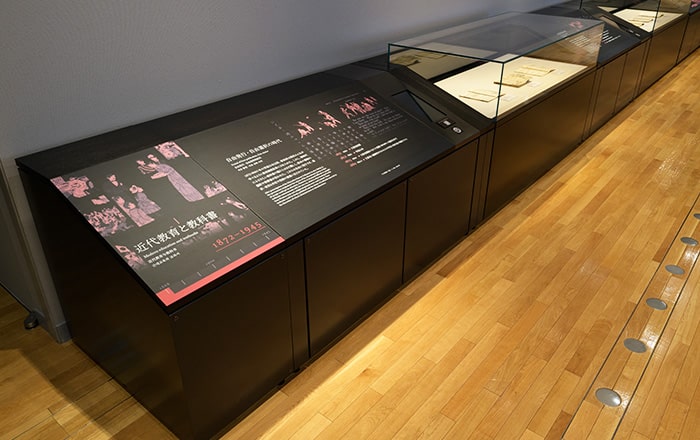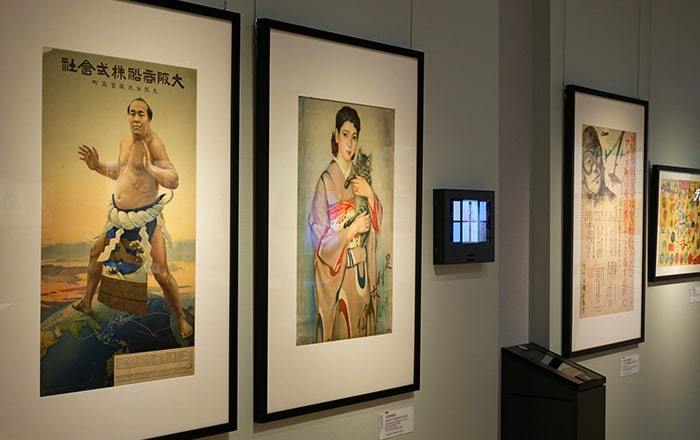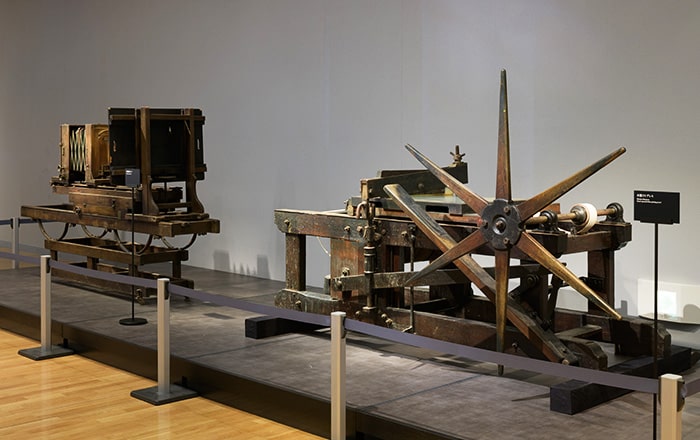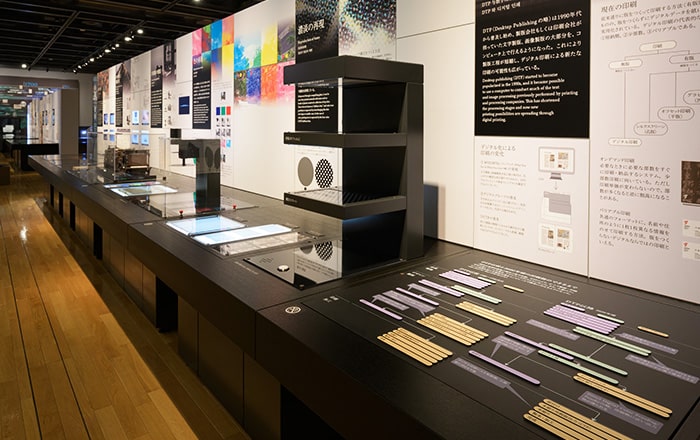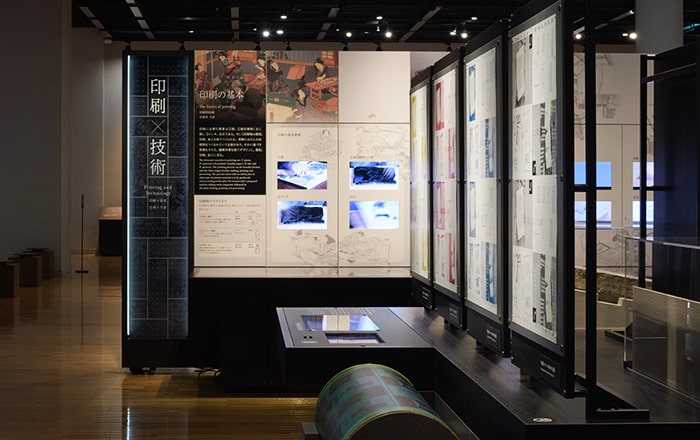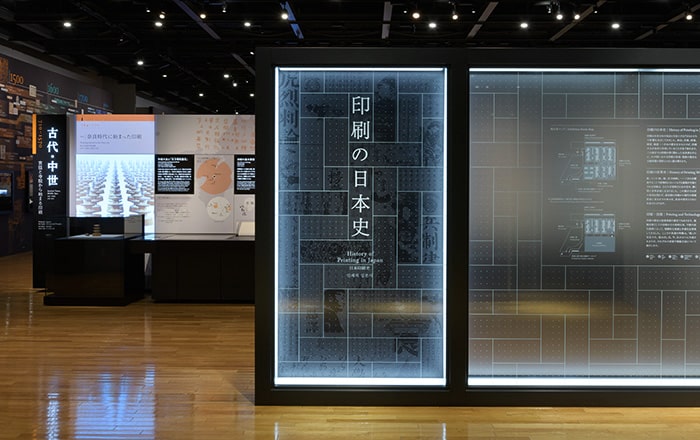General Exhibition
General Exhibition
The Printing Museum, Tokyo holds an array of exhibitions on themes related to printing. Among them this exhibition, in addition to making public our collection centering on printed material, type and machinery, takes a systematic look at the history and culture built up over many years of printing on a scale reflecting the history of civilization.
-
History of Printing in Japan
Printing has influenced Japanese society and culture in various ways since ancient times. If you look at the history of Japan, you will see how the power of printing has affected politics, religion, entertainment, education, and news. This exhibition will break down the history of how printing was form and developed in Japan, and together with the materials in this museum, will focus on the events in which printing was deeply involved.
-
History of Printing in Worldwide
In principle, any number of copies can be reproduced by making full use of paper, ink(Indian ink), plates, and pressure(via printing machines), and thus printing spread to all corners of the globe almost the instant it was invented. This exhibition traces the chronological history of printing from the East to the West along with the changes in society over time, and covers everything from the earliest prints to modern information technology.
-
Printing and Technology
The history of printing is also the history of technological innovation. Since its invention, printing as a technology for reproduction has achieved dramatic development and diversification through constant trial and error. A common feature in printing is the existence of “plates”. They are divided into four main types of plates: Relief printing plates, Intaglio plates, Planography plates, and Stencil printing plates, and will introduce the materials and plate making methods for each plate respectively.
*The Printing and Technology exhibition will not be on display during temporary exhibitions. -
Printing House Typeface Collection
Typeface design is one of the key elements underpinning letter printing. The exhibit introduces the Printing House’s collection of typefaces sorted by style and presented in chronological order. The installation offers an opportunity to learn more about the world of typefaces.
-
Printing House
The Printing House is a participatory exhibition space where workshops on letterpress printing and other themes are held to share the fascination of printing with visitors. Its dedicated staff also engage in the collection and preservation of typefaces and printing machinery, conduct research and studies on the history and technology of printing, and work on educational activities to promote printing culture. A range of machinery for letterpress printing is also on display.
The captions for the exhibition material of the world history of printing that lies beyond the images add to the contemporaneous themes of the history of Japan, and have been arranged to provide a parallel history of Japan and the world.
The Printing & Technology Exhibition enables visitors to compare the possibilities of expression in printing through the combination of four types of plates and two plate making processes.
The history of Japanese printing is divided into four time zones, ancient and middles ages (orange), modern (blue), recent (red) and contemporary (green), each with their own theme colors, enabling visitors to understand which age they are looking at.
The Japanese history of printing provides a commentary on the period backgrounds and printing techniques with a fresco theme, as well as exhibit material and explanations of the material on the tables.
This is the start of printing history in Japan. Japanese printing began in the Nara period (710-794 AD).
The ukiyo-e woodblock prints that are representative of the Edo period are introduced here. Popular themes and processes are explained.
Content concerning printing is explained in an easily understood introduction using images and graphics.
New techniques in printing were introduced to Japan in the Meiji period (1868-1912) by hired workers from overseas.
In the column on the history of printing in Japan, the singularities that colorize cross-generational printing culture are introduced. *Note that this exhibition is closed during temporary exhibitions.
As publicity and advertising boomed in the wake of the growing consumer society, new printing techniques became used, and many posters started to be produced.
Several pieces of machinery that were actually used are exhibited in the Printing & Technology corner.
The wall exhibition in the Printing & Technology corner comprehensively introduces printing from its fundamentals through to DTP and digital printing.
The Printing & Technology corner has numerous of tools actually used in making plates, as well as the plates themselves.
The sign at the entrance to the exhibition zone depicts the Museum's collection in a grid and expresses the start and spread of printing in a collage.
Exhibitions and collections
-
- Latest exhibition information
- The latest information is provided for visitors about exhibitions, events and schedules.
-
- List of temporary exhibitions
- Information is provided on temporary exhibitions underway and related events.
-
- General exhibition
- Here we introduce our general exhibition.
-
- VR Theater lineup
- Details of the programs currently being shown.
-
- Collection hunting
- Here we introduce some of the artifacts from our collection.



